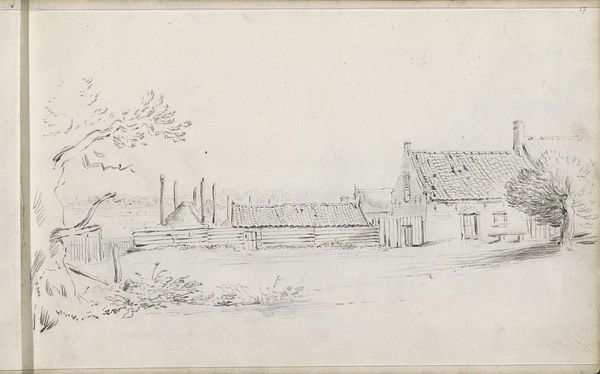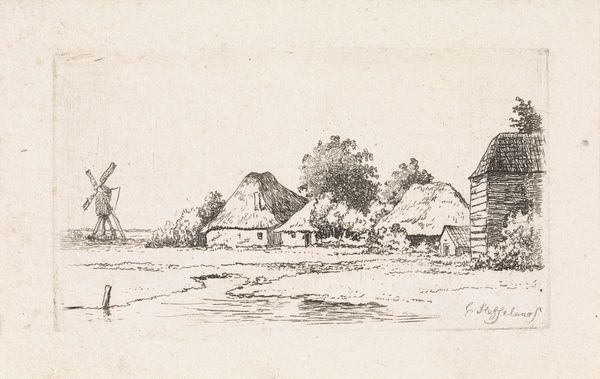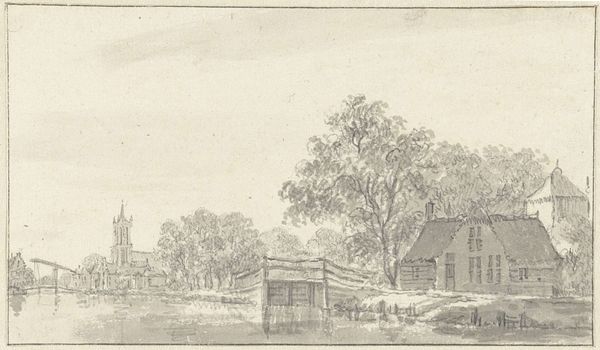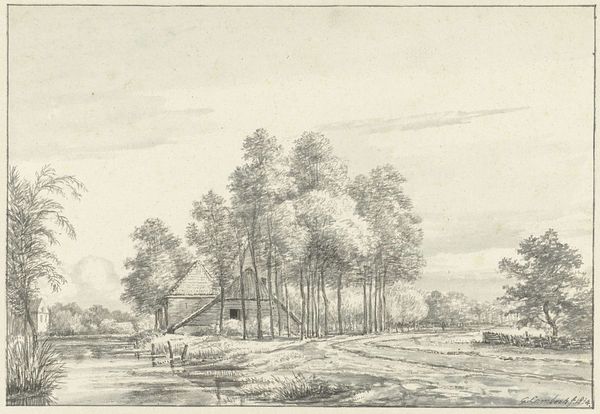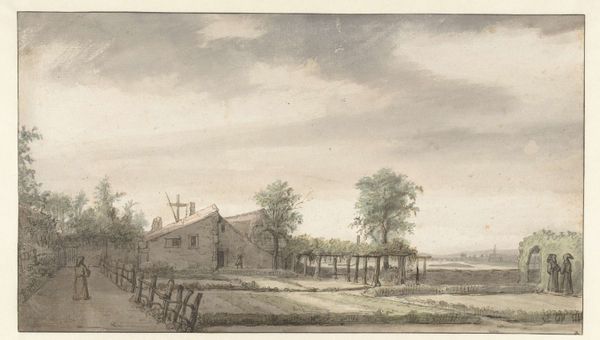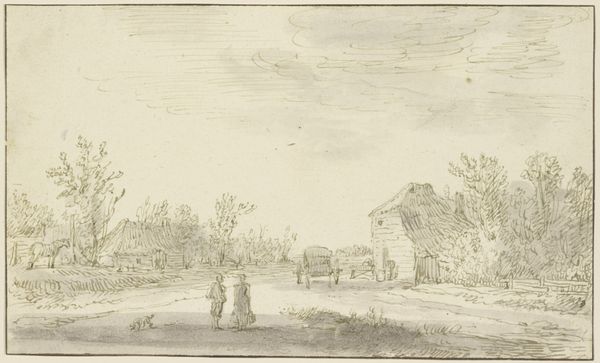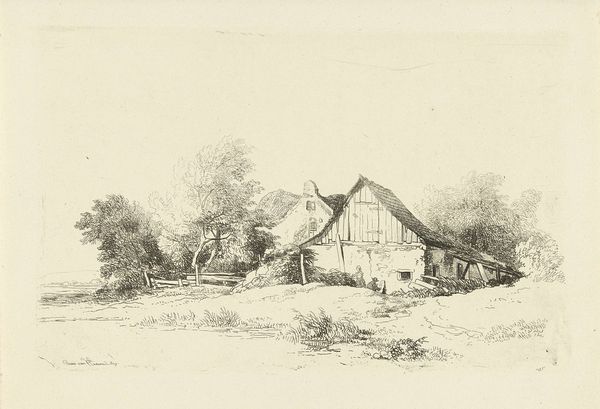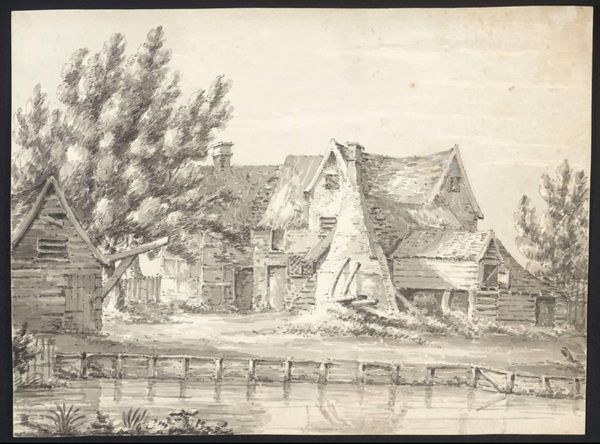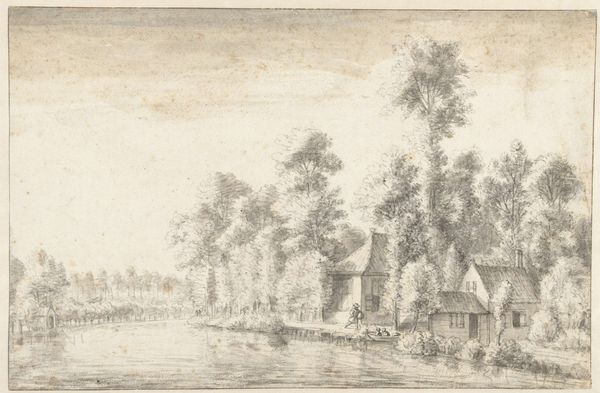
#
architectural sketch
#
landscape illustration sketch
#
amateur sketch
#
quirky sketch
#
pen sketch
#
pencil sketch
#
incomplete sketchy
#
sketchwork
#
pen-ink sketch
#
initial sketch
Dimensions: height 165 mm, width 217 mm
Copyright: Rijks Museum: Open Domain
Curator: This is Hendrik Gerrit ten Cate’s "Landschap met boerenwoning bij water," created in 1839. The piece appears to be rendered primarily in ink. Editor: It feels like a study in contrasts. There's a delicate, almost airy quality, juxtaposed with the rather ramshackle state of that farmhouse. Curator: The farmhouse indeed commands attention. The artist’s rendering captures its structural components. Consider how ten Cate uses line weight to delineate the textures of the thatched roof and wooden walls. Editor: Precisely. I’m struck by the textures here. You can almost feel the roughness of the aged wood and the density of the thatching. The reflections in the water contribute too—what was the social status of these rural residents in the landscape? Were these common construction practices? Curator: An intriguing line of inquiry! The landscape elements create depth using line and the tonal variation is rather gentle, pushing the architectural forms forward. Editor: Looking at the lone figure on the boat, so small against the background windmill, I wonder about themes of isolation or rural labor... It makes you consider the daily toil that sustains this scene. It seems he might be a local fisherman who barters and provides sustenance. Curator: From a formalist perspective, it's the arrangement that provides narrative cohesion. There is a harmony of lines from the reflection in the water to the roof's form; it serves the greater artistic purpose. Editor: True. But doesn’t this simplicity obscure the complexity of daily life for these people? Who were the farmers? What did they produce? What's the local ecosystem sustaining the waterlife and agriculture. The landscape isn't a neutral backdrop. Curator: Food for thought. But perhaps ten Cate’s focus wasn't on meticulous sociological record-keeping, but on using those elements to convey a sense of peace in nature. Editor: Possibly so. Yet, the material conditions that form the landscape always leave their mark. The worn look of the farmhouse conveys a story—beyond any artistic consideration. Curator: I appreciate that broader perspective. Thank you for reminding me of the artwork’s world beyond pure form. Editor: And thank you. Analyzing this piece from both perspectives has given me so much to think about regarding the materiality of landscape sketches from this era.
Comments
No comments
Be the first to comment and join the conversation on the ultimate creative platform.

